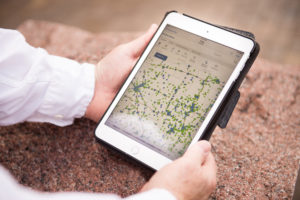A newly designed and enhanced Bureau of Remediation and Redevelopment Database Tracking System (BRRTS) application is now available. Update your existing bookmarks to the new web address for quick access to the information.
BRRTS is a go-to source for publicly available information about reports of potential contamination, property with contamination, cleanup activities and redevelopment activities in Wisconsin.
Updates to BRRTS were planned to transition the application to different technology platform. As part of the process, the DNR asked internal and external stakeholders to suggest improvements to the tool. Recommendations included updating the user interface and improving search features. The DNR completed the first phase of improvements which include the following highlights:
- The ability to search by the Consultant Company and Historical Waste Fill fields
- Improved options for viewing search results
- Buttons to easily navigate to supplemental datasets, maps and location details
- Faster page scrolling on the Activity Details Page
- And more!
Additional enhancements are anticipated for the Fall of 2025.
Contact Sonya.Rowe@wisconsin.gov with questions or suggestions.


 Did you know there are over 30,000 documents available for viewing and downloading on the
Did you know there are over 30,000 documents available for viewing and downloading on the